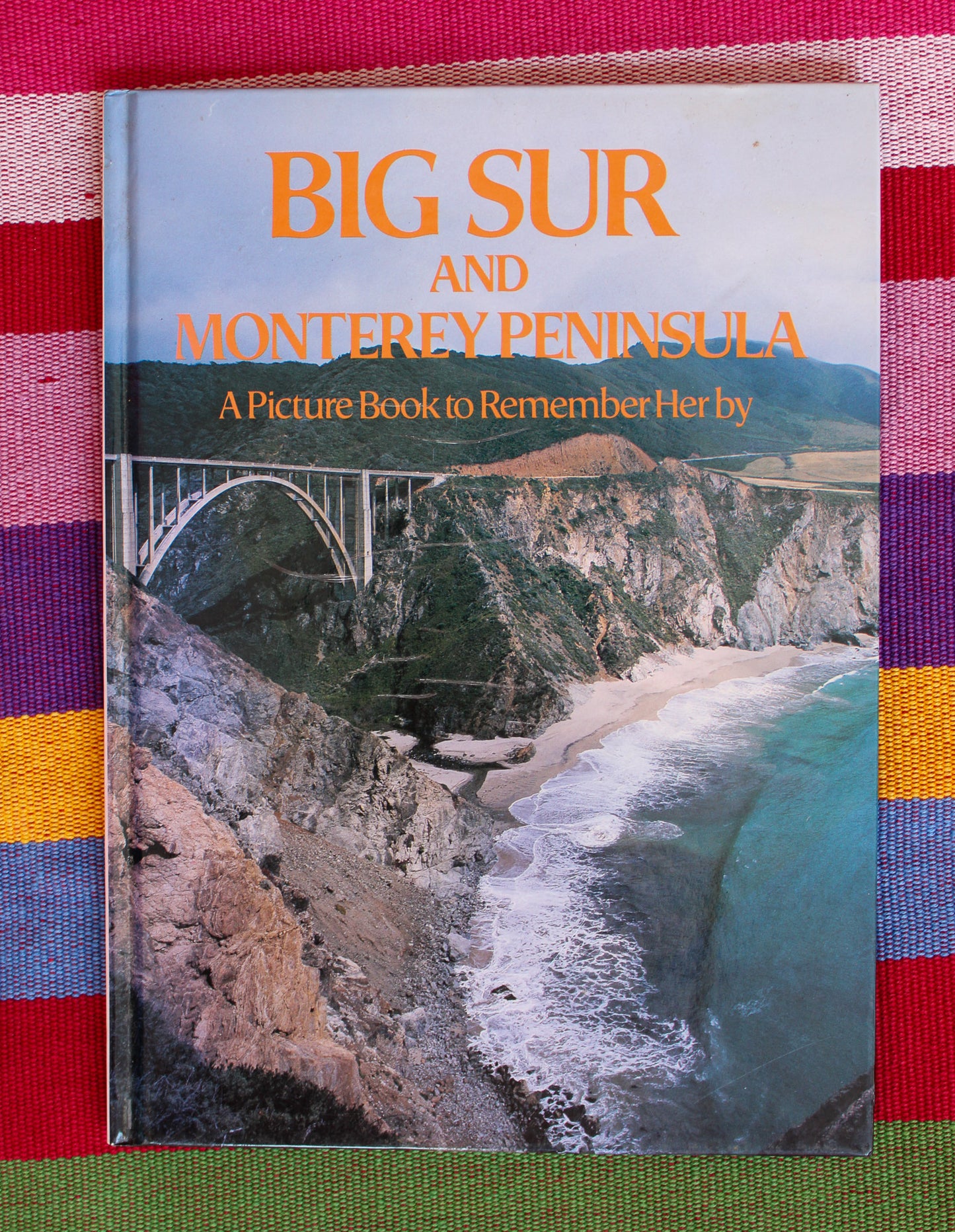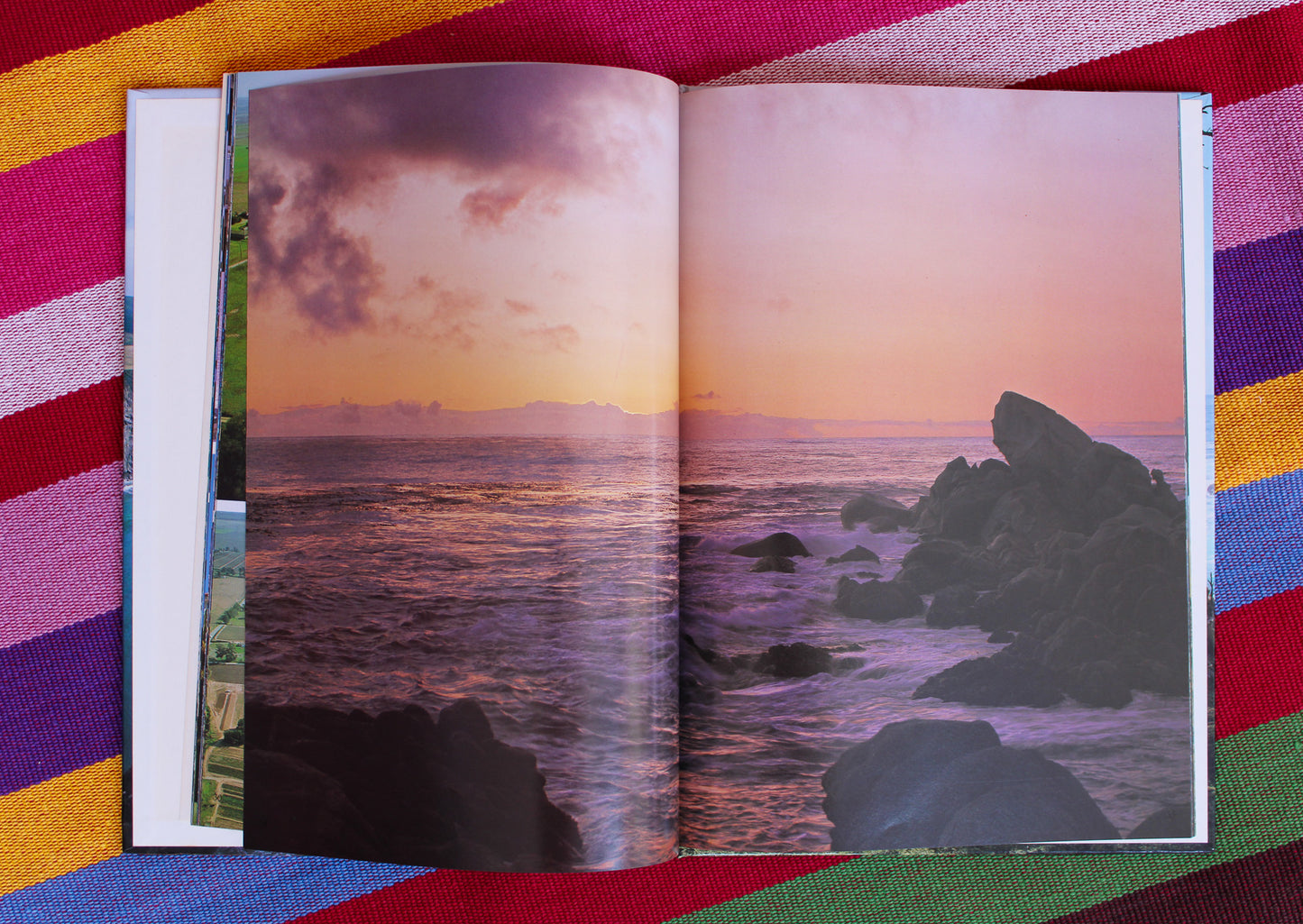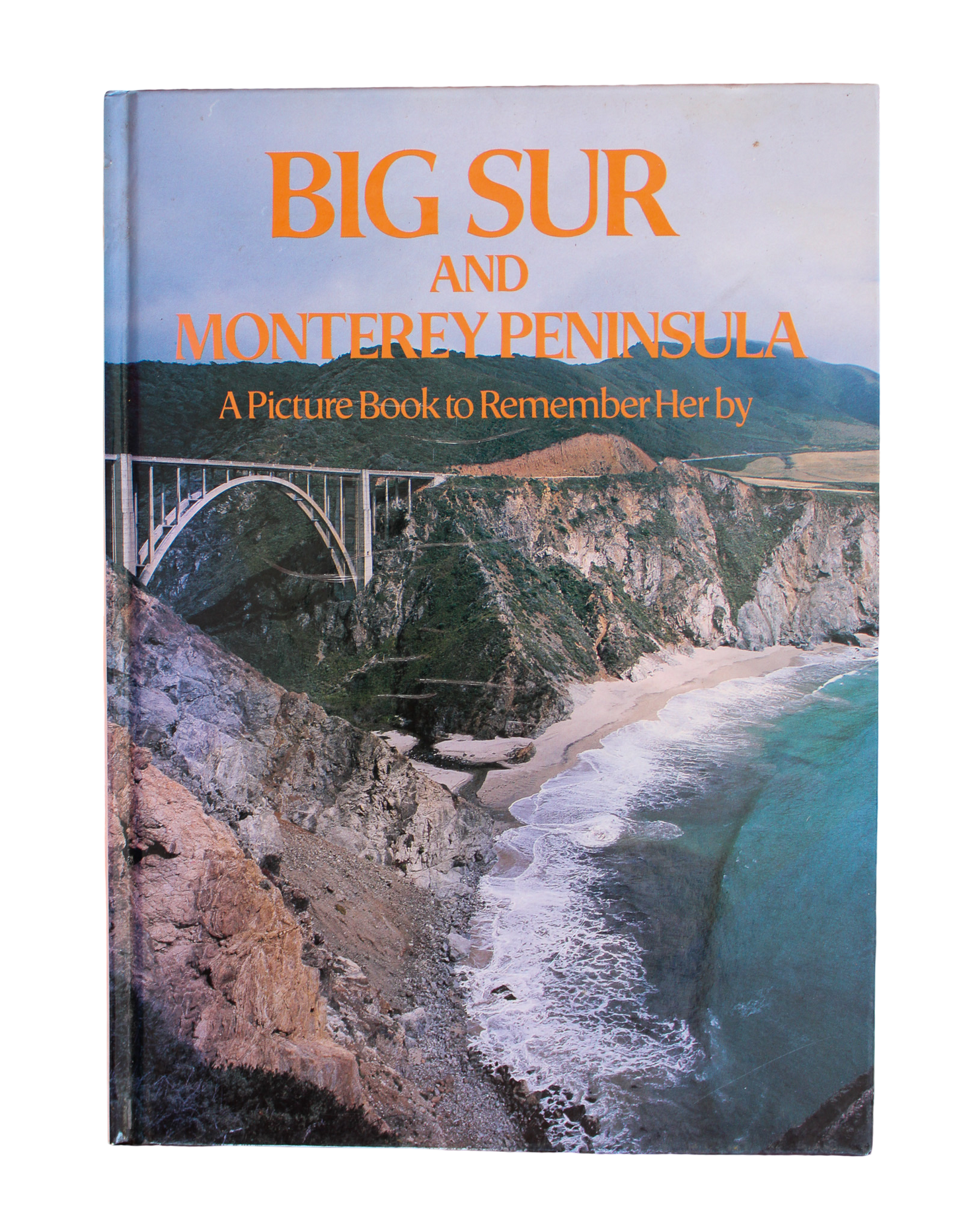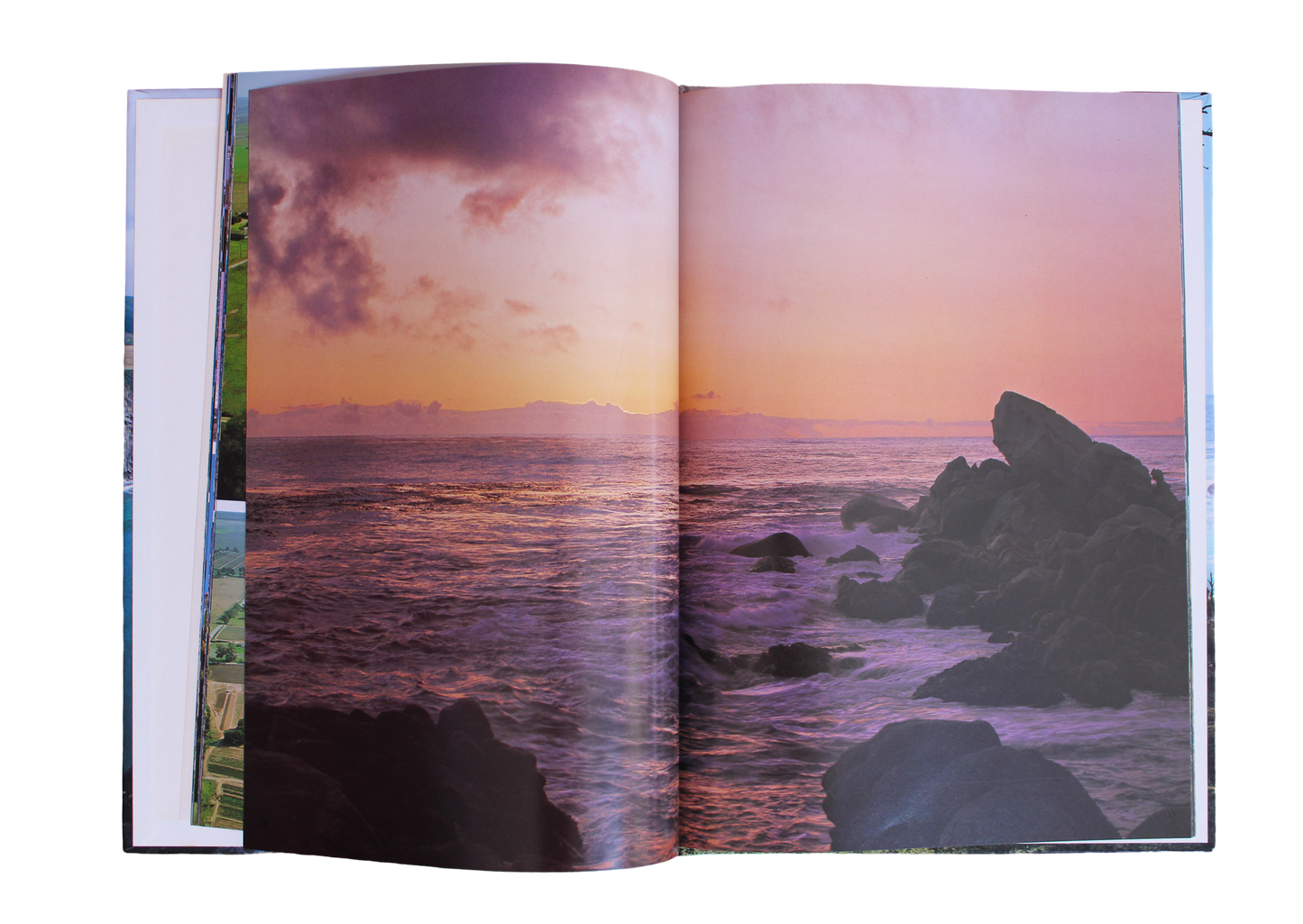Big Sur and Monterey Peninsula: A Picture to Remember Her By
Big Sur and Monterey Peninsula: A Picture to Remember Her By
details
details
First edition (1992) copy of Big Sur and Monterey Peninsula: A Picture to Remember Her By by Philip Clucas, David Gibbon, and Ted Smart
The birthplace of John Steinbeck and inspiration for him and so many other writers, Monterey is one of California's most scenic areas. On a peninsula at the southern end of Monterey Bay, about one hundred miles south of San Francisco, it is dominated by miles of rocky coastline, white sandy beaches and acres of woodland. Steeped in history, Monterey provides a chance to recapture the early Californian way of life, with restored buildings and museums as well as offering modern state parks, nature reserves and entertainment in the towns for visitors.
Named in honour of the Count of Monte Rey, Viceroy of Mexico, by a visiting explorer in 1602, the area was not settled until 1770, when a Franciscan mission was established. Soon after, it became the Mexican capital and, two years before San Francisco took over as California's leading city, the American capital.
The peninsula, craggy and weather-beaten, was once a successful fishing port,
and now its popularity with visitors has led to a thriving tourist industry.
Along the coastline, midway between Carmel and Monterey, the specular 17 Mile Drive winds its way through pine forests, groves, of Monterey cypress penetrating the Del Monte Forest, overlooking Point Joe, where many ships have been wrecked over the years when sailors have mistaken it for the entrance to Monterey Bay and met with turbulent waters. The shoreline is the home of numerous seabirds and colonies of sealions and boasts the sparkling Pebble Beach. The Pebble Beach Golf Course, one of six along the drive, appeals to the more confident golfer with the seventh hole almost completely surrounded by water.
A more precarious drive along State Highway 1 weaves its way along the rugged Carmel-Big Sur coastline, passing three large State parks and crossing the Bixby Creek Bridge to the town of Big Sur. One of the world's highest highway bridges, Bixby Creek arches 260 feet above the creek bed, overlooking a magnificent seascape. The Pt Sur lighthouse, seen from the bridge, stands on a headland of rock and the light, flashing every fifteen seconds, can be seen for twenty-five miles out at sea.
Carmel is a forest village which prides itself on remaining unspoilt. Encouraging community spirit, the work of artists, sculptors, writers and weavers is exhibited at local galleries. Like the towns of Monterey and Big Sur it is a shoppers' paradise, with an abundance of clothes and craft shops. One of the many restored missions established in the early settlement days is sited here: The San Carlos Borromeo de Rio Camelo, now one of two Basilicas in the entire Western United States.
Echoes of early times can still be found in the town of Monterey with many early 19th-century buildings still standing. Along the waterfront, Cannery Row, the street which inspired John Steinbeck's book of the same name, still harbours the old canneries as monuments to the sardines that mysteriously disappeared from the bay in the late 1940s. Born in Salinas, only a few miles from the Monterey restaurants; a far cry from the olden days.
William Randolph Hearst obviously shared Steinbeck's feeling for Monterey, choosing the crest of one of the Santa Lucia Mountains in the peninsula - "The Enchanted Hill' - for his home. The majestic Hearst San Simeon State is now open to the public and shows, through its collection of antiques, tapestries, Roman mosaics and wood carvings that no expense was sparedHardcover with dust jacket
Hardcover
Authors: Philip Clucas, David Gibbon, Ted Smart
Edition/Year: first edition, 1992, Cresent Books
Condition: good vintage condition.
Dimensions: 11" x 8"
Share








